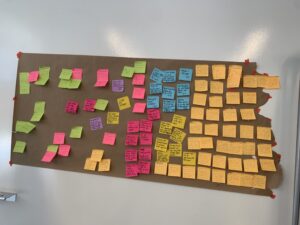Goal:
Due to increasing responsibilities, technological advances, and a global pandemic, people are spending copious amounts of time indoors, now more than ever. But there are so many unrealized benefits to spending time outdoors. Over the past weeks, we’ve interviewed and studied a wide array of people with varying relationships to the outdoors. Our goal is to make spending time outside accessible to people, whether that means geographically, physically, or psycho-culturally.

Baseline Study:
We interviewed and conducted a baseline study with 9 participants. We interviewed people with a wide variety of attitudes towards the outdoors: an urban dweller, suburban/rural dweller, nature noobie, essential worker/blue collar worker, white collar worker (remote), white collar worker (in person). After reviewing our data, we chose to hone in on people who enjoy the outdoors but live in a city and busy workers who do not feel they can spare time to spend outside. We chose these as our dominant personas because these themes reoccurred across our initial persona types which prevented people from going outside.
Synthesis – Idea Dump
Key Insights:
From these interviews, we mapped out our thoughts into different categories as well as organized them over time.
Synthesis – Theme Mapping
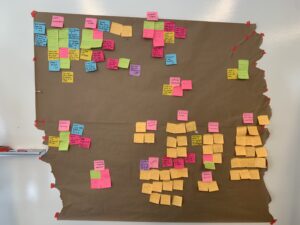
At a high level, we found that while people expressed enjoying spending time outside, they had conflicting attitudes towards the outdoor due to:
- Activation energy required to leave the comfort of your home
- Viewing outdoors as something dedicated for certain activities / People want to have an intention to do some task outside
- Spending time outside seems very laborious and time consuming (and is easy to push off as a non-priority)
- Not feeling safe or comfortable to move around outside (especially at night) or in urban recreation spaces due to crime
Synthesis – Time Mapping
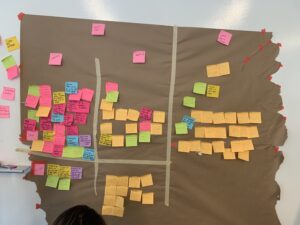
Meet Our Personas
We identified two unique personas which represent the most common traits of our study participants. They are Stephanie, a woman who lives in an urban area, and Kevin, an undergraduate college student.
Stephanie the City Gal
Stephanie is a BIPOC woman who lives in a big city who spends a majority of her time working.
Persona #1
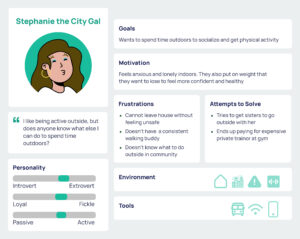
During her free time or off-time from work, she would love to spend time outside to rejuvenate and relax. However, she often experiences accessibility issues with air quality and finding green spaces around her. On the weekend, if she wants to spend time in nature, she can only go to one park nearby. However, she doesn’t always feel safe and comfortable there because she is hyper-aware of that parks in big cities feel ‘dirty’ to her due to city smog, housing insecure people who live and sleep in the park, and crime that occurs in gathering areas like the park. On the weekdays, if she wants to get a breath of fresh air after work, she often times feels unsafe after being followed home one day by a strange man.
Her main goal is to feel a sense of freedom and mobility outside her home, but she feels a conflict between her love for spending time outdoors and her safety and comfort.
Journey Map #1
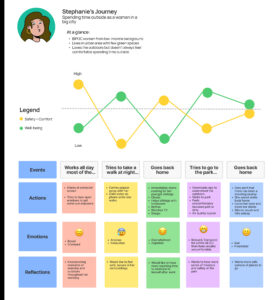
Kevin, Busy College Student
Kevin is a busy university student who lives in a suburban campus and spends most of his time inside on his computer. His typical weekday experience is filled with a bunch of back to back PSETs.
Persona #2

He has been feeling extremely burnt out and isolated recently and wants to pick up his old hobbies playing basketball outside and spending time with friends to improve his well-being. However, despite his desire to spend more time outside his dorm room, he often feels like he has to flake on plans with friends or pushes off exercising outside because he always has more work to do. His main goal is to improve his physical, mental, and social wellbeing by spending leisure time outdoors, but he feels a conflict between his desire and knowledge that spending time outside is good and how he consistently feels like he has not time to spare and de-prioritizes it compared to his day to day obligations.
Journey Map #2
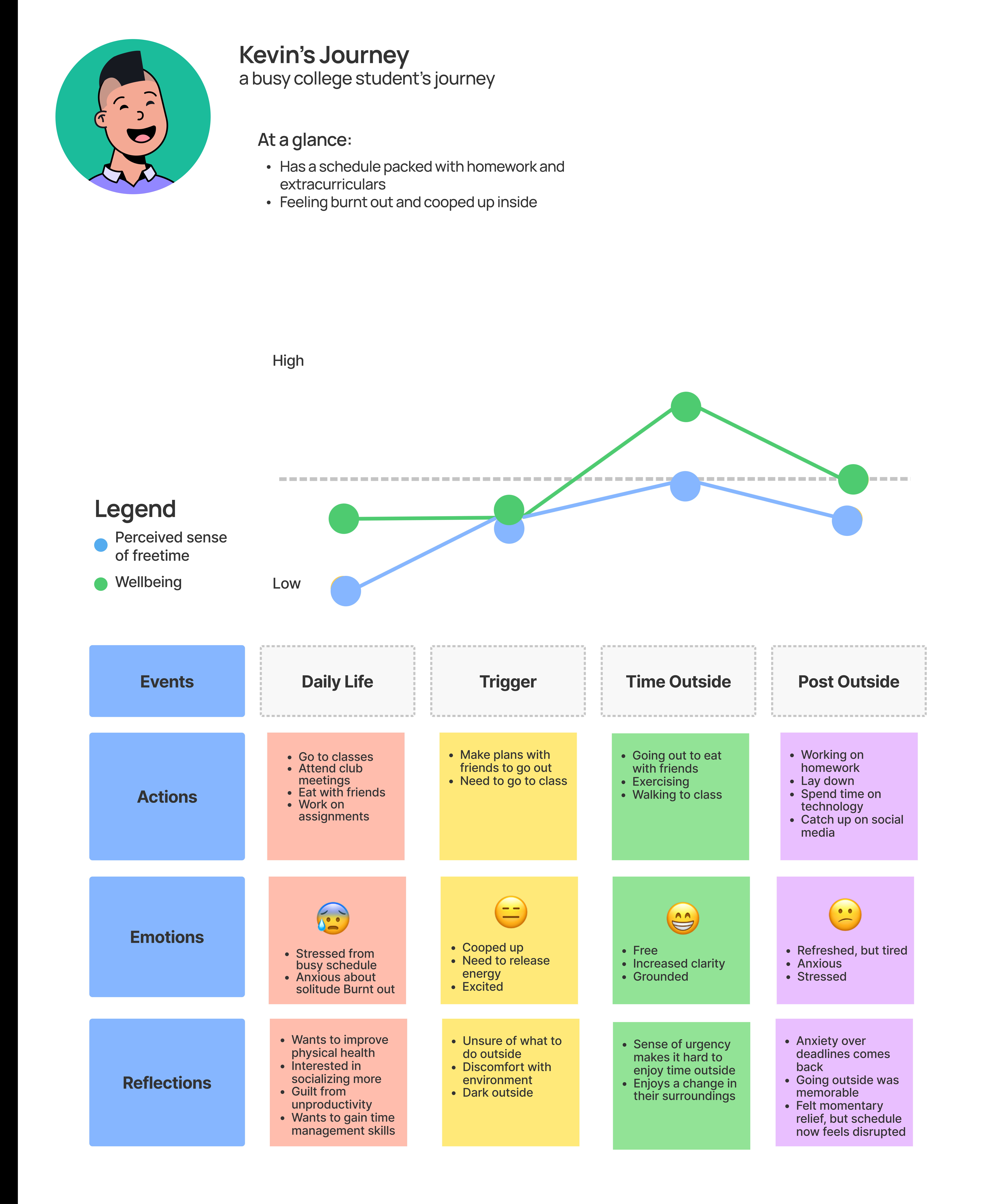
Next Steps:
From these two journeys, we want to synthesize a solution that tries to tackle these conflicts of perceived sense of comfort and perceived sense of time. Currently, we want to explore the idea of prompts or activities outside with a social component, as buddies have been shown to improve both users’ comfort and safety with existing in outdoor spaces as well as accountability to make and execute plans to get outside.


